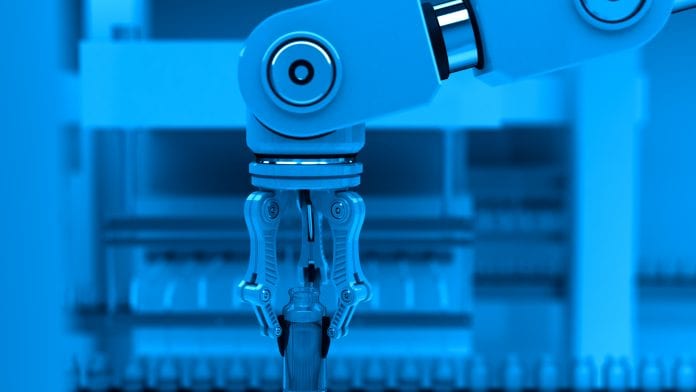
In this article, Todd Graham, a freelance scientist at Kolabtree, discusses the benefits and challenges of laboratory automation.
Automation has transformed laboratories over the past 40 years, allowing them to perform more tests, of a greater variety, with less staff and lower costs but it is not without its challenges.
Laboratory automation: the benefits
Reduced test costs
Laboratory automation has scaled from the batch organisation of a cluster of tests to the ability to perform a large menu of tests within a small set of platforms. Integrated with sorting and aliquoting systems, a large menu of tests can be performed by a limited number of personnel, eliminating large amounts of manual labour. The flexibility of automated platforms allows for tests to be performed in a limited amount of space, reducing utilities and equipment costs, meaning that capital expenses can be amortised over a higher number of tests.
Faster processing
Eliminating the need for humans to handle specimens means that they can be prepared for testing much faster. This means that biochemical tests can be performed rapidly, and technologies from molecular diagnostics, liquid chromatography and even microbial and tissue culture can be performed without the need for intervention. Tests can be performed more quickly, allowing for faster turnaround times for results.
Ease of interaction with LIS/HIS systems
Laboratory information systems have been used to track the results and follow trends for patients. What laboratory automation can do with LIS systems is to allow for more sophisticated test ordering to suggest tests that may be appropriate based on the results. Integrated with health information systems, this information can inform clinical decisions and guide towards more effective treatments.
Modularity
Laboratory automation systems are customisable ― the number and the types of modules available mean that different testing technologies can be added and removed. This gives laboratories the need to evolve with their patient population and with technology, meaning that services offered will be more relevant to patient populations. This also limits the risk of obsolescence, justifying the overall capital cost.
More time to consult
The reduction of manual labour means that laboratory professionals have more free time to communicate with their healthcare colleagues on how laboratory tests work. They can guide them towards tests that will help them answer clinical questions effectively and avoid tests that may be unnecessary. They can also help explain the science behind the tests as to better assist healthcare professionals as to what is going on with the patient in front of them, allowing them to adjust treatments as appropriate.
Laboratory automation: the challenges
Learning curve
Laboratory automation changes how people interact with testing. Instead of having to interact with specimens, the automation does the work. However, there are judgment calls to be made with releasing tests results, monitoring equipment, performing quality control testing and deciding whether to perform maintenance. Understanding the rhythms of how testing may work with this equipment can be a challenge, particularly as workflows may change in a laboratory.
Understanding software
Laboratory automation requires sophisticated software to keep track of the test orders, route the specimens in the appropriate direction, maintain patient and quality control results and watch for equipment indicators. Getting in the habit of monitoring the software can be a challenge, as it requires understanding on a systemic level what the automation is doing and why. For those who have worked with their hands on the bench, understanding how that translates to automation can be a challenge.
Troubleshooting
Understanding what an error means for a complex system can be a problem; while there are some obvious issues that can be directly addressed, subtle issues can creep up over time. This requires tracking and monitoring of systems to stop issues before they start. It also means bringing a different mindset to system operations, and great communication skills among staff and healthcare professionals, particularly those who may work on different shifts, in order to address testing concerns.
Loss of institutional knowledge
When new technology comes in, old technology goes out of the door. While this does lead to increased productivity, some skills and knowledge of the old system gets lost. As medical care takes place over a continuum of years, knowing why something was done a certain way in the past is necessary to ensure that any new information on a patient’s tests is understood within a wider context. Getting rid of older testing techniques makes it challenging to keep that level of knowledge accessible. Also, older skills may be useful in troubleshooting new equipment, even when those skills weren’t used very often.
Change in test mix
As the benefits of automation become apparent, it may be cost effective to bring some tests in house, while ending or outsourcing other tests. These new tests require changes in supplies, which has downstream impacts on storage of reagents and staffing needs. Understanding the new workflows, which may create new demands for labour, may create staffing challenges, as people have to get accustomed to new hours and new responsibilities. Working through those challenges can create unanticipated burdens which make switching to laboratory automation difficult.
Todd Graham
Guest author
Freelance biotech market research analysts,
tech transfer specialist, and quality assurance consultant
Kolabtree










Intelligent automation has played a key role in a technological re-imagining of healthcare; streamlining digitization, accelerating processes, and introducing otherwise impossible efficiencies. Among other things, this means that patients receive better care as staff hands are freed from more clerical, less human facing work.